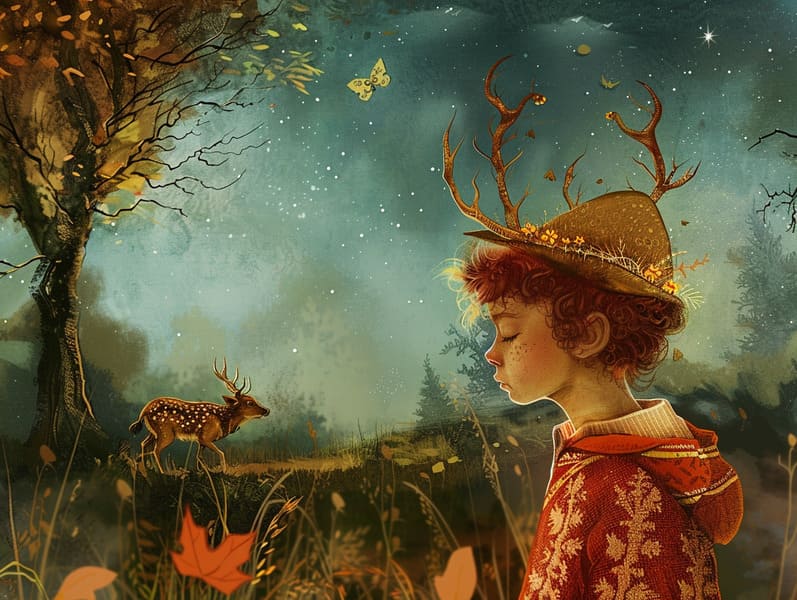The Genesis of Legendary Fairy Tales and Their Unending Enchantment.
The Genesis of Legendary Fairy Tales and Their Unending Enchantment.
Blog Article

Famous fairy tales have old origins. These tales have been spoken from one generation to the next centuries before they were ever inscribed. They were born from a variety of backgrounds, including European traditions. They were initially told among adults, often carrying themes and messages relevant to the societal norms and beliefs of the time.
The Brothers Grimm, Jacob and Wilhelm Grimm, were among the first to collect and release many of these beloved fairy tales. Their anthology, "Grimm's Children's Stories," included stories like "Cinder Maid," "Hansel and Gretel," and "Snow-White and Rose-Red," which have since become hallmarks in the world of iconic fairy tales. Similarly, Hans Christian Andersen's magical fairy tales, such as "The Story of the Little Mermaid," and "The Story of the Ugly Duckling," have enchanted hearts worldwide, securing their place in the pantheon of classic fairy tales.
Despite their historical roots, fairy tales remain as pertinent as ever, especially as children's bedtime stories. These delightful tales are now available in numerous formats, including colorful picture books, charming animations, and digital fairy tales.
Their lasting presence can be linked to several charming aspects:
Vital Lessons: Old fairy tales often present important moral lessons. Fairy tales like "The Wolf and the Liar" teach the value of integrity, while "The Tortoise and the Hare" demonstrate the merits of resolve and modesty. These stories offer young readers clear distinctions between correct and incorrect, shaping their moral compass in a soft yet significant way.
Kindness and Comprehension: Old fairy tales frequently portray beings facing challenges and problems, encouraging young readers to connect with their struggles and root for their triumphs. For instance, "Beauty's Beast" emphasizes the merit of looking beyond appearances to appreciate the real character of a soul, developing tenderness and insight.
Cultural Insights: Many fairy tales are deeply embedded in the cultural contexts from which they emerged. Reading these fairy tales can provide illuminating insights into different beliefs, strengthening a sense of global appreciation and awareness.
Fantasy and Imagination: The mythical elements in timeless fairy tales—mythical entities—promote children’s fantastical thinking. These tales lead readers to enchanted realms, inspiring fantasy ideas and a sense of wonder that stays a check it out lifetime.
Ancient fairy tales are not only fascinating but also illuminating. They provide entrancing tools in building various intellectual and emotional capacities in young readers. When fairy tales are spoken out loud, they nurture verbal development by showing new lexicon and intricate sentence structures. This practice also promotes listening abilities and attention span, as the young follow the story, expectant to see what happens next.
Furthermore, examining the themes and characters of fairy tales can enhance critical thinking and logical thinking. Young ones are educated to discern patterns, make predictions, and realize cause and effect. These reflections also contribute to young ones speak out their thoughts and feelings, promoting their emotional intelligence.
In today’s modern era, the existence of digital fairy tales has made these fairy tales more reachable than ever. Web-based platforms and applications extend large libraries of children's fairy tales that can be browsed or listened to anytime, anywhere. Fairy tales read out loud are particularly well-liked, making available an delightful method for the young to relish these delightful tales. Spoken stories and spoken videos carry characters and settings to life, often accompanied by mesmerizing sound effects and tunes that heighten the storytelling experience.
The enduring charm of ancient fairy tales lies in their ability to transform to today's society while continuing with their main lessons. Contemporary renditions of these stories often feature more different figures and modern settings, making them pertinent to today’s audience. However, the fundamental themes of valour, kindheartedness, and integrity remain unchanged, continuing to impact children of all ages.
Ancient fairy tales also offer a sense of ease and familiarity. They serve a well-structured narrative with a apparent beginning, middle, and end, often coming to a close with the closure of conflicts and the triumph of righteousness over wickedness. This constancy can be heartening for the young, proffering a sense of steadiness in an fluctuating world.
Timeless fairy tales continue to allure and instruct new generations, maintaining their charm and importance in modern society. As children's night stories, they supply a perfect blend of allure and teaching, cultivating moral values, empathy, and creativity. The availability of digital fairy tales and the popularity of fairy tales told out loud validate that these ancient fairy tales remain acquirable to new generations.
By retaining and telling these tales, we continue to acknowledge the rich tapestry of inventiveness and cultural heritage. Whether you are accessing a artistically illustrated book, perusing a internet library, or listening through an audio story, the enchantment of classic fairy tales is always within reach. These tales reveal of the unchanging essence of storytelling and its ability to draw us together across centuries and lands.
Even if you are reading a colorful picture book, experiencing a electronic collection, or listening via an audiobook, the grandeur of ancient fairy tales is always within reach.
These tales illustrate of the unchanging power of storytelling and its ability to bring us together across time and space, establishing a link that charms and informs alike.